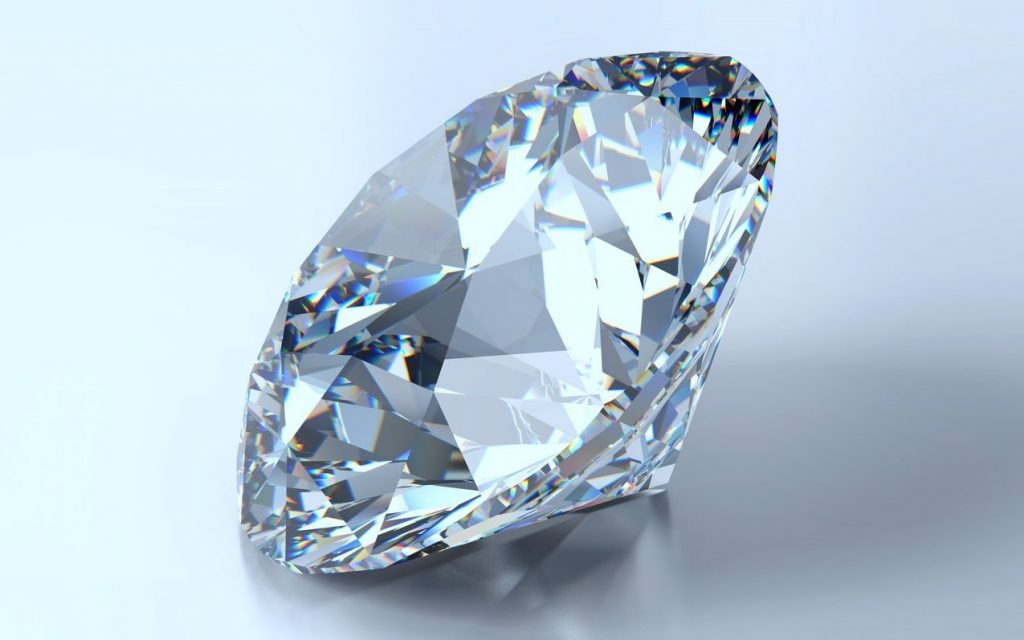Diamonds are one of the most precious and sought-after gemstones in the world. Traditionally, diamonds were mined from the earth, but with the advancements in technology, it is now possible to grow diamonds in a laboratory. This has raised an important question: what are the differences between lab-grown diamonds and natural diamonds?
What are Natural Diamonds and Lab Grown Diamonds?
Natural diamonds and lab-grown diamonds are two distinct categories of diamonds that differ in their origin, production methods, and characteristics.
Natural diamonds are formed deep within the Earth’s mantle under immense pressure and heat over millions of years. They are created from carbon atoms arranged in a crystal lattice structure. These diamonds are typically mined from deep mines or extracted from alluvial deposits. Natural diamonds have unique characteristics, often referred to as the “four Cs”: carat weight, cut, color, and clarity. They are renowned for their rarity, durability, and natural beauty. The mining of natural diamonds, while a traditional practice, can have environmental and ethical concerns associated with it, such as environmental impact and conflict diamonds.
On the other hand, lab-grown diamonds, also known as synthetic diamonds or man-made diamonds, are created through advanced technological processes in controlled laboratory environments. These processes replicate the conditions under which natural diamonds are formed, involving the use of carbon sources, extreme pressure, and high temperatures. As a result, lab-grown diamonds have the same chemical composition and physical properties as natural diamonds. They are optically, chemically, and physically identical to natural diamonds, often indistinguishable without specialized equipment. Lab-grown diamonds offer several advantages, including reduced environmental impact, ethical sourcing, and potential cost savings, as they can be more affordable than natural diamonds.
How Lab-Grown and Natural Diamonds Done
There are two ways to create diamonds in a lab. The first method is called HPHT (High Pressure High Temperature) and the other is called CVD (Chemical Vapour Deposition). Both start with acquiring a diamond seed. A diamond seed is a single diamond crystal that is cut into squares with a thickness close to a single strand of human hair.
For an HPHT diamond, several of these diamond seeds are placed neatly into a chamber, then are applied an insurmountable amount of heat and pressure to it for up to 12 weeks to force them to “grow” and form into rough cubes of diamonds. These rough cubes are then cut, shaped and polished to create a diamond that you would put on an engagement ring.
CVD diamonds are quite similar to HPHT, in that the diamond seeds are again placed neatly into a chamber. But instead of applying extreme pressure and heat, the chamber is filled with carbon atoms which attach themselves to the diamond seeds and form rough cubes of diamonds. The process takes fewer weeks than HPHT.
The difference between HPHT and CVD diamonds are seen to be quite significant in terms of their physical properties, as HPHT diamonds are seen to produce diamonds with a slight yellowish and greyish hue as compared to CVD diamonds which are clearer in hue.
Another worthy note is that through CVD, the diamonds created are of the best quality (Type IIa) – otherwise extremely rare to find naturally.

How are Lab-Grown and Natural Diamonds Different?
Lab-grown diamonds and natural diamonds may look nearly identical to the naked eye, but there are several key differences between these two categories of gemstones. These distinctions lie in their origin, production methods, environmental impact, and cost. Here’s a breakdown of how lab-grown and natural diamonds differ:
a) Origin
Natural Diamonds: Natural diamonds are formed deep within the Earth’s mantle, where carbon atoms crystallize under extreme pressure and heat over millions of years. They are then brought to the surface through volcanic eruptions or other geological processes.
Lab-Grown Diamonds: Lab-grown diamonds are created in controlled laboratory environments. They are produced through processes that simulate the high-pressure, high-temperature conditions found deep within the Earth. Carbon sources, such as graphite, are subjected to these conditions to grow diamond crystals.
b) Production Methods
Natural Diamonds: Natural diamonds are mined from deep mines or extracted from alluvial deposits in various parts of the world. The mining process involves extracting diamond-bearing ore and then cutting, polishing, and shaping the rough diamonds.
Lab-Grown Diamonds: Lab-grown diamonds are produced through one of two primary methods: High-Pressure, High-Temperature (HPHT) or Chemical Vapor Deposition (CVD). These methods involve carefully controlling temperature, pressure, and carbon source to encourage diamond growth on a seed crystal.
c) Environmental Impact
Natural Diamonds: The mining of natural diamonds can have significant environmental consequences, including habitat disruption, soil erosion, and the consumption of vast amounts of energy and water. It can also result in the release of greenhouse gases and other pollutants.
Lab-Grown Diamonds: Lab-grown diamonds typically have a smaller environmental footprint. The controlled production environment and recycling of materials can reduce the ecological impact associated with mining.
d) Ethical Considerations:
Natural Diamonds: The mining of natural diamonds has raised ethical concerns, particularly with regard to conflict diamonds or “blood diamonds.” These are diamonds that are mined in war zones and sold to finance armed conflict against governments.
Lab-Grown Diamonds: Lab-grown diamonds are often considered a more ethical choice, as their production is not associated with the same kinds of ethical issues as some natural diamonds.
e) Price
Natural Diamonds: Natural diamonds are typically more expensive than lab-grown diamonds, especially when it comes to larger or higher-quality stones. Their rarity and the costs associated with mining contribute to their higher price.
Lab-Grown Diamonds: Lab-grown diamonds are often more affordable than their natural counterparts. The controlled production process can result in cost savings, making these diamonds accessible to a wider range of consumers.
Which is Better Between Lab-Grown and Natural Diamonds?
Now that we have discussed the origins of both types of diamonds, let’s go back to the question at hand. The difference between lab-grown and natural diamonds, and which is “better”?
This ultimately falls to you, the consumer. If you’re looking for diamonds that are less costly (30-40% specifically), have absolutely zero ethical conundrum behind the making of it, and are more eco-friendly, then lab-grown is your best bet.
However, if you feel like diamonds formed by our earth for millions of years through the planet’s natural underground temperature and pressure AND are mined and traded responsibly are more “valuable” (despite the identical properties to lab-grown), then do shop for conflict-free natural diamonds.
The important part of any of this is to be informed on the type of diamonds you are purchasing. Always insist on knowing the diamond’s origin with the jeweller when shopping, and understand the impact on the people and the environment the diamonds have. If you are looking for your own diamond rings with exquisite design and diamonds to boot, be sure to check out our jewellery online store.

